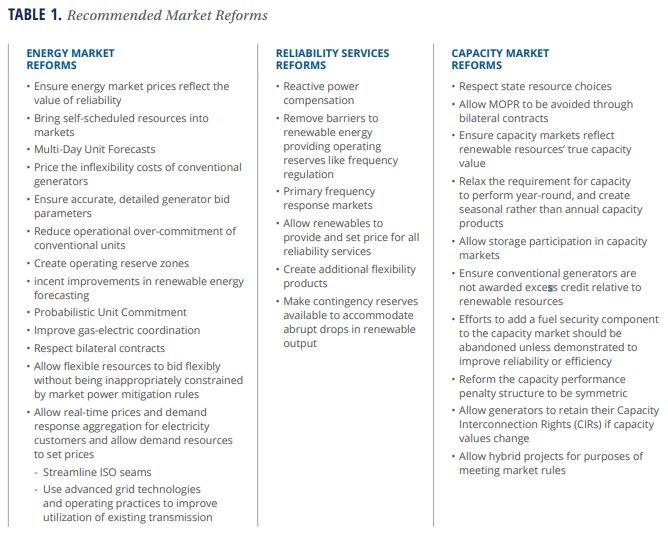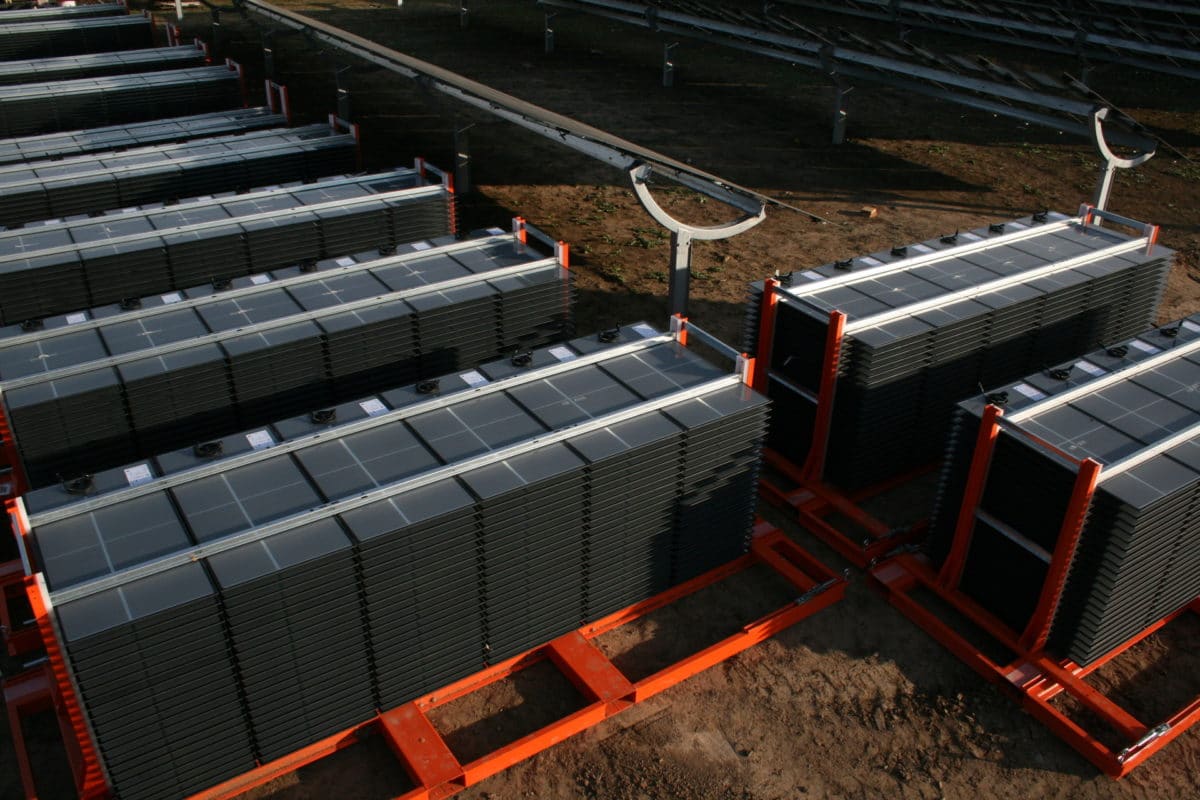There have been many analyses that show varying combinations of wind, solar, storage and transmission 100% powering the United States. The various projections debate pricing, capacity, political realities and other variables, but all of them show pathways toward a clean grid being heavily powered by wind and solar. Getting there, some fifteen to thirty years in the future, is going to take more than models, though. It will take a changes in policies and infrastructure to guide the business of keeping the power grid running
In a report commissioned by the Wind Solar Alliance, Grid Strategies has delivered Outdated Electricity Market Rules prevent full Renewable Energy Participation (.pdf). The purpose of the report is to suggest refinement to the rules that govern the day to day electricity markets across the United States. The rule refinements are focused on allowing wind, solar, storage and demand response to compete in markets much more like standard generation resources; coal, gas and nuclear.

In a quote with Wind Power Monthly, Michael Goggin of Grid Strategies said that such market reform would enable renewables to achieve 70-90% penetration, as long as the report’s recommendations were implemented along with better transmission.
With major grid operators in PJM and MISO planning fundamental redesigns of their electricity markets and operating procedures, the analysis proposed reforms to specifically to these regulators. The actual services noted include frequency stabilization and regulation, ramping, voltage regulation, disturbance ride-through, black start and system restoration, and 10- or 30-minute reserves.
Much of the recommendations are based on the technical reality that solar and wind are much more predictable in aggregate than has been assumed, and can effectively offer volumes of generation when contractually obligated to.
The very deep report goes into many techniques for extracting greater value from renewable energy, and compares it to the current grid status quo.

An example of the market undergoing this evolution toward recognizing the faster response times of energy storage is Australia. The Australian Energy Market Commission is switching from 30 minute settlements to five minute settlements in 2021. This decision was probably influenced by the new Tesla 100 MW / 129 MWh battery, coupled with a wind farm, that moved infinitely faster than the fossils on the grid, and has seemingly captured 25% of its costs in its first seven months of operation.
In the United States, a collaborative effort between solar developer FirstSolar, the California Independent System Operator (CAISO) and the National Renewable Energy Laboratory, the project tested the ability of advanced inverters to moderate output at a 300-megawatt solar plant to allow it to provide a range of grid support services.
Essentially, FirstSolar slightly reduced output at the project and then set the inverters to provide, at different times, frequency regulation, voltage support, ramping and other services.
Wind Solar Alliance recently launched with a focus on the structures of the broader power grid, with a very specific bend on supporting corporate procurement of renewables. Their assumption is that by supporting the needs of this aggressively growing, high demanding and politically savvy buyer base, it’ll open these generation resources to helping all buyers.
This content is protected by copyright and may not be reused. If you want to cooperate with us and would like to reuse some of our content, please contact: editors@pv-magazine.com.








What about decentralizing power generation to realize the savings from not having to add so many long distance transmission lines. I have read reports that shows that decentralization can both lower costs and decrease vulnerability to major widespread disruptions in service.